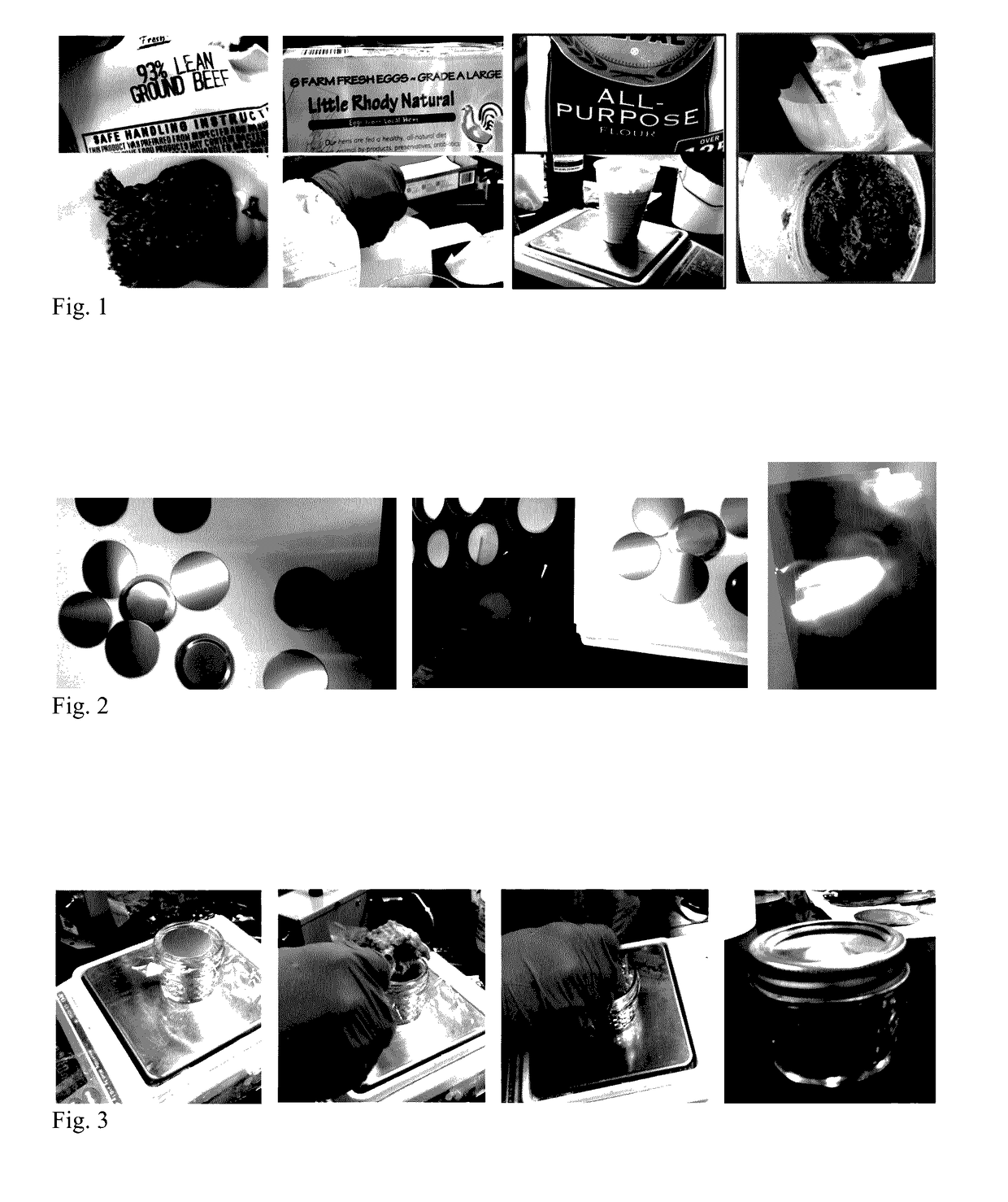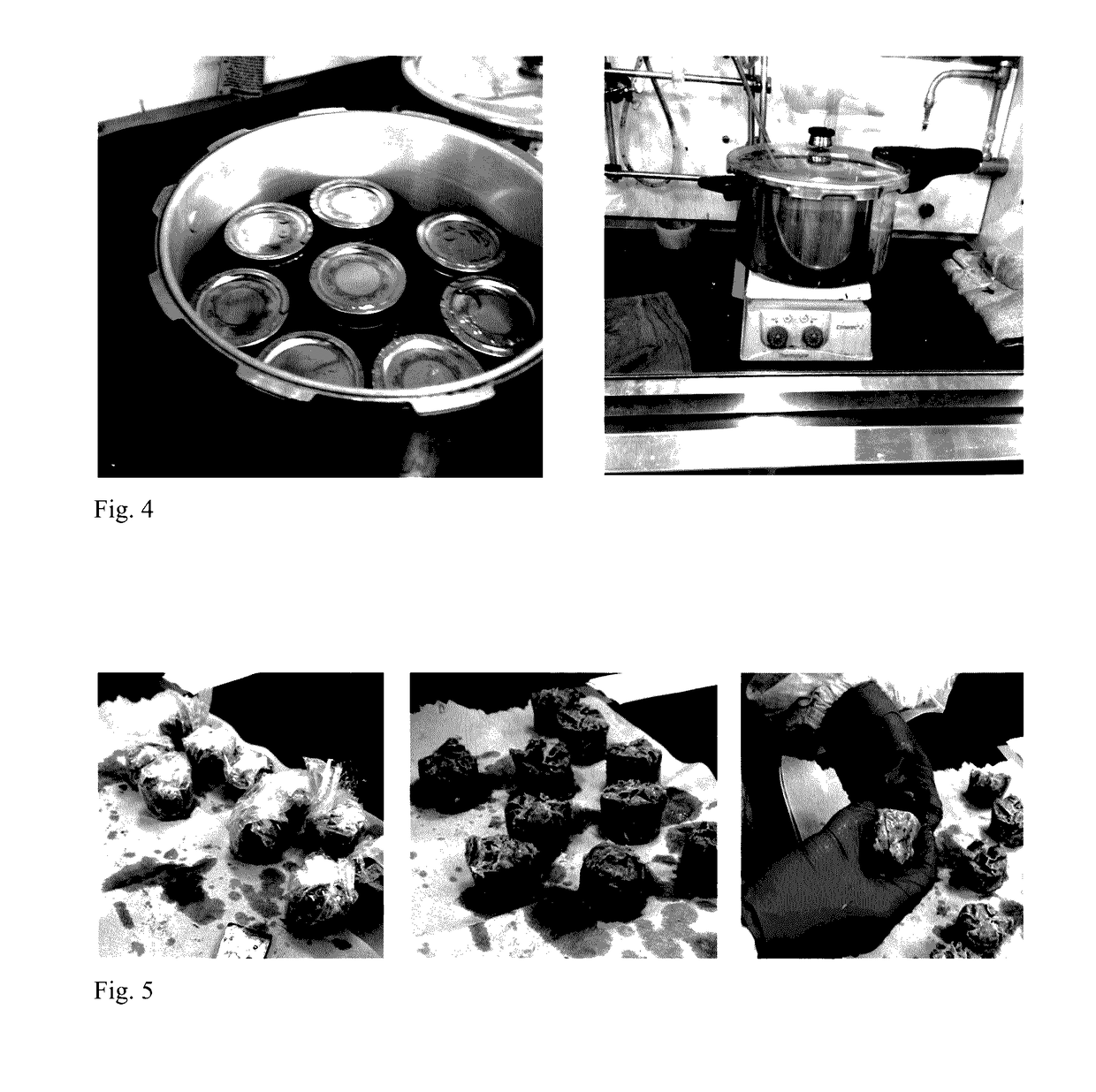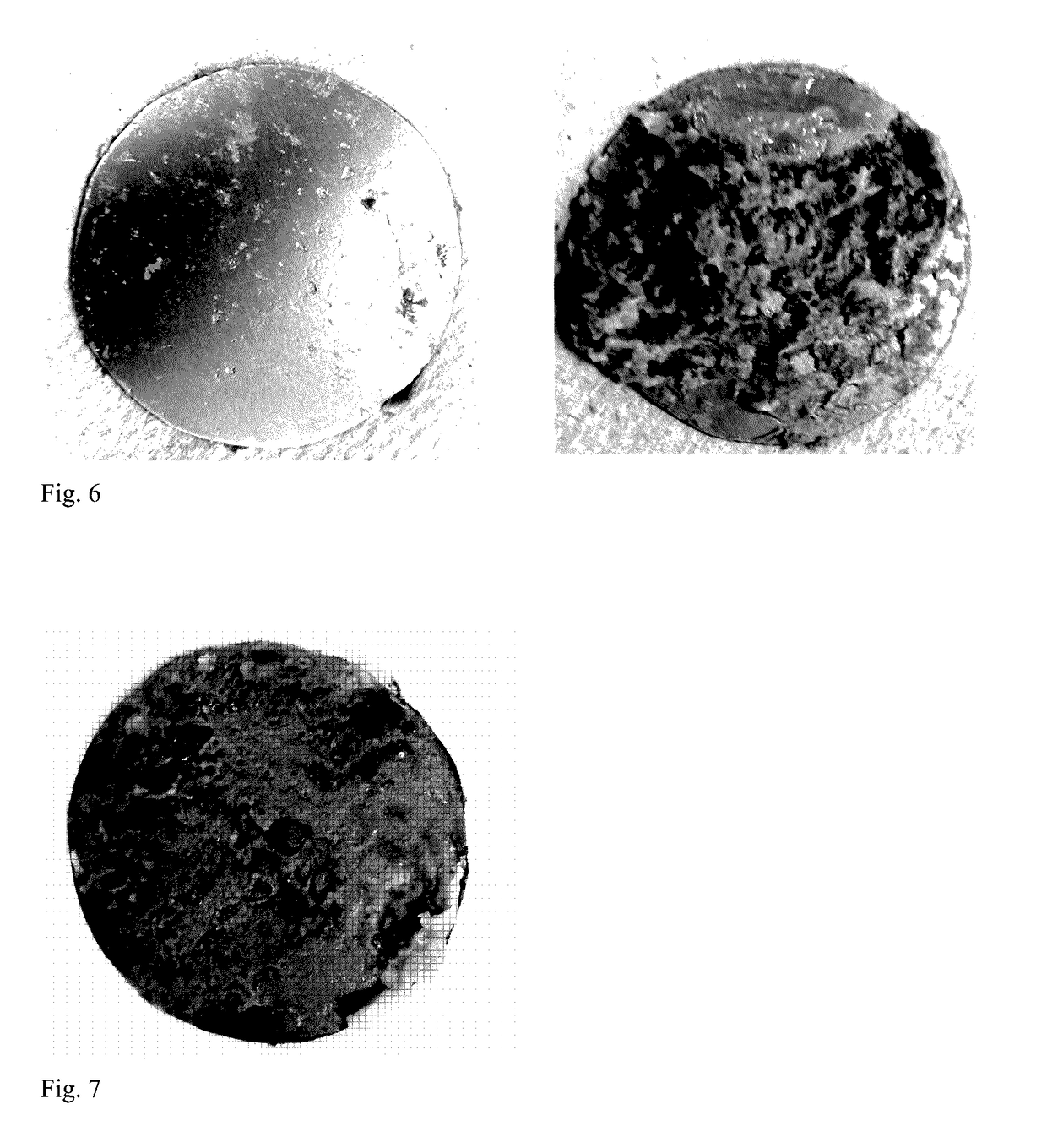Silicone coated polyester film for release of canned meat products
a technology of polyester film and canned meat, applied in the field of bisphenol a (“ bpa”) free multi-layer film, can solve the problems of food poisoning of consumers, the inability of canned meat products to be exposed to such intense heat stress without suffering degradation of sensory quality, and the loss of nutritional valu
- Summary
- Abstract
- Description
- Claims
- Application Information
AI Technical Summary
Benefits of technology
Problems solved by technology
Method used
Image
Examples
examples
[0047]This invention will be better understood with reference to the following Examples, which are intended to illustrate specific embodiments within the overall scope of the invention, but the scope of the invention is not limited to the Examples.
Resin Materials
[0048]Resin materials for films mentioned in the examples were as follows:
[0049]PET Resin P1 (PET resin comprising alkali metal phosphate and phosphoric acid): Toray F1CCS64 (IV=0.65; Tm=255° C.) supplied by Toray Films Europe.
[0050]PET Resin P2 (ordinary film-grade PET resin, not comprising alkali metal phosphate): Toray F21MP (IV=0.65; Tm=255° C.) manufactured by Toray Plastics America.
[0051]PET Resin P3: Bottle-grade PET resin 8712A from Invista with an IV of 0.75.
[0052]PET Resin 4: PET Resin anti-block masterbatch type F18M, containing 2% silica particles with an average size of 2 μm (Fuji Silysia 310P) manufactured by TorayPlastics America (IV=0.62; Tm=255° C.).
[0053]Amorphous Copolyester Resin CoP1: Eastar 6763 PETG su...
examples 1 and 1a
[0089]3-layer BOPET film structures were produced by melt extrusion from three extruders supplying the resin blends corresponding to layers A, B, and C as shown on Tables 1, 2, and 3 respectively. The silicone masterbatch content in layer A was 0.5%, corresponding to silicone content 0.25 wt. %. The differences between compositions 1 and 1a were with respect to the antiblock masterbatch (P4) content in layer A and with respect to the amorphous copolyester (CoP1) content in layer C (and the resulting differences in the content of the majority resin balance P1 and P2 in layers A and C respectively). The cast film was formed into a biaxially oriented film by stretching 3 times along the machine direction at a temperature of 82° C. and subsequently stretching 4 times along the transverse direction through an oven held at a temperature 85-93° C. in the stretch zone and 204° C. in the anneal zone and collected in roll form by means of a rotating winder at a linear speed of 32 m / min.
[0090]...
examples 2 and 2a
[0091]Examples 1 and 1a were repeated with the only major difference being that the silicone masterbatch content in layer A was 1.0%, corresponding to silicone content 0.5 wt. %. using an A / B / C three-layer structure as shown in Tables 1, 2, 3 respectively. The Results of the food release test are listed in Table 4
PUM
| Property | Measurement | Unit |
|---|---|---|
| melting point | aaaaa | aaaaa |
| kinematic viscosity | aaaaa | aaaaa |
| temperatures | aaaaa | aaaaa |
Abstract
Description
Claims
Application Information
 Login to View More
Login to View More - R&D
- Intellectual Property
- Life Sciences
- Materials
- Tech Scout
- Unparalleled Data Quality
- Higher Quality Content
- 60% Fewer Hallucinations
Browse by: Latest US Patents, China's latest patents, Technical Efficacy Thesaurus, Application Domain, Technology Topic, Popular Technical Reports.
© 2025 PatSnap. All rights reserved.Legal|Privacy policy|Modern Slavery Act Transparency Statement|Sitemap|About US| Contact US: help@patsnap.com



